This note is going to demonstrate how to add an IPv6 address on Vigor Router's WAN interface. But please note that IPv6 can only be added when the interface is already connecting to the IPv4 Internet.
1. Make sure the WAN is online.
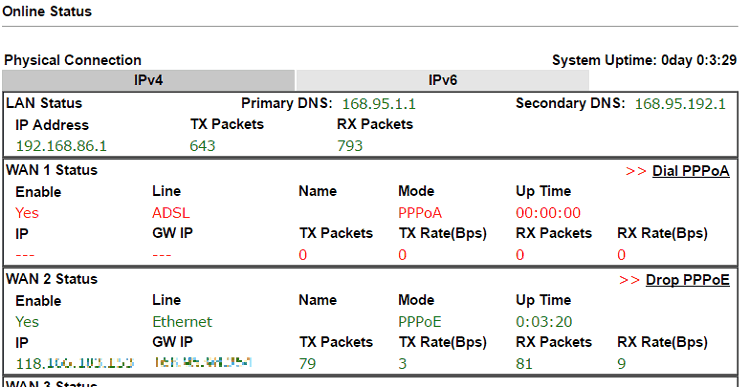
2. Go to WAN >> Internet Access, click on IPv6 at the WAN interface that you would like to add an IPv6 address.

3. Select a Connection Type from the drop-down list, enter the required parameters. Then click OK and reboot the router to apply the settings. Below we will provide some examples of configuring IPv6 in different connection types.

PPP (Point-to-Point Protocol)
It only works when the IPv4 access mode is PPPoE as well, and the IPv4 ISP also provides an IPv6 address. Just choose the Connection Type to "PPP," no other setting is required.
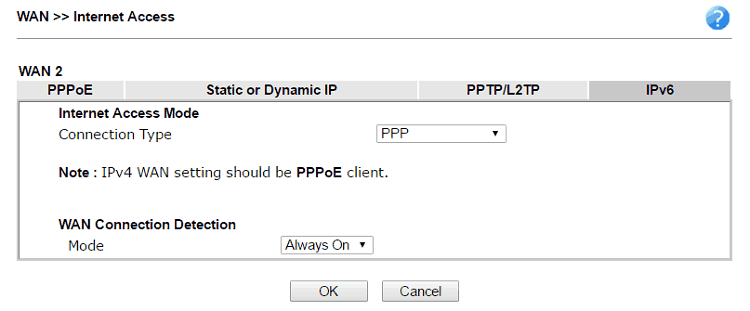
TSPC (Tunnel Setup Protocol Client)
In this mode, the IPv6 connectivity is provided by a tunnel broker on the IPv4 Internet through a tunnel set up by Tunnel Setup Protocol (TSP). To use TSPC, you'll need to sign up for a tunnel broker service and get a username and password. The configuration needs to identify username, password, and the IP or hostname of the TSP server.

Static IPv6
If your ISP provides a static IPv6 address for you, you may configure that IPv6 address for WAN by entering the IPv6 address and Prefix Length as the ISP requires, and click Add.

You will see the IPv6 address in the Current IPv6 Address Table. Then, specify the IP address of IPv6 Gateway.

6in4 Static Tunnel
In this mode, the IPv6 connectivity is provided by a tunnel broker on the IPv4 Internet through a tunnel configured manually. To use the 6in4 Static Tunnel, you need to sign up for a tunnel broker service. Then, identify the tunnel server's IPv4 address in Remote Endpoint IPv4 Address, enter the router's IPv6 address in 6in4 IPv6 Address, and enter the routed IPv6 prefix in LAN Routed Prefix.

6rd
6rd uses 6in4 to provide IPv6 connectivity, which means IPv6 traffic is encapsulated inside IPv4. But ISP has their 6rd prefix to control the transition of their access-aggregation IPv4-only part of their networks to native IPv6. To use 6rd, select Auto 6rd or Static 6rd as your ISP requires, enter ISP border relay agent IP in IPv4 Border Relay, enter IPv4 Mask Length and IPv6 Prefix as your ISP requires.
4. After finishing the settings, Network Administrator may check the status from the IPv6 tab on Online Status >> Physical Connection.

5. Furthermore, Network Administrator may test the connectivity of IPv6 from the router by going to Diagnostics >> Ping Diagnosis and selecting "IPv6".

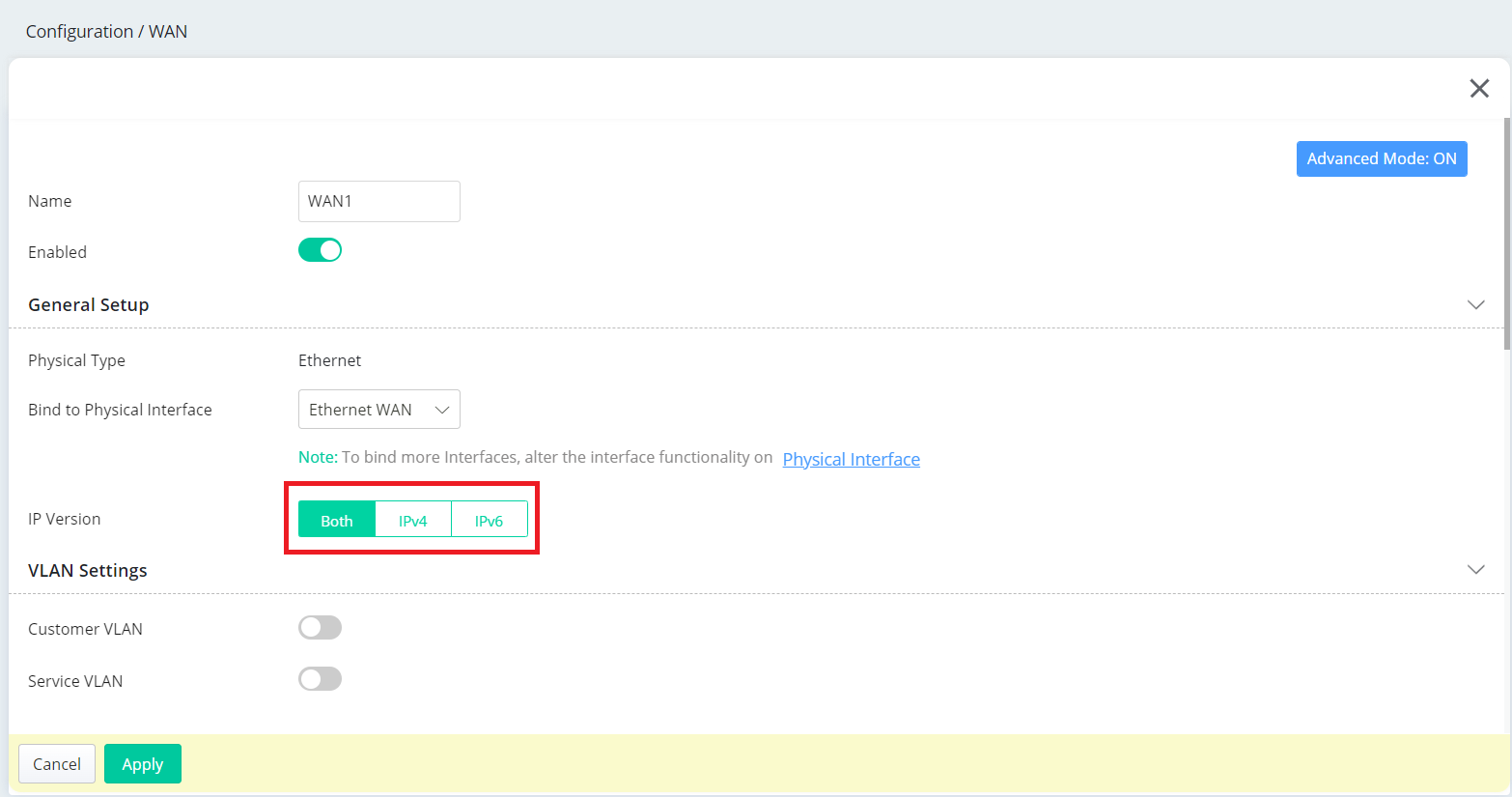
PPP (Point-to-Point Protocol)
It only works when the IPv4 access mode is PPPoE, and the IPv4 ISP also provides an IPv6 address. Just choose the Connection Type to "PPP," no other setting is required.

TSPC (Tunnel Setup Protocol Client)
In this mode, the IPv6 connectivity is provided by a tunnel broker on the IPv4 Internet through a tunnel set up by Tunnel Setup Protocol (TSP). To use TSPC, you must sign up for a tunnel broker service and get a username and password. The configuration needs to identify the username, password, and the IP or hostname of the TSP server.
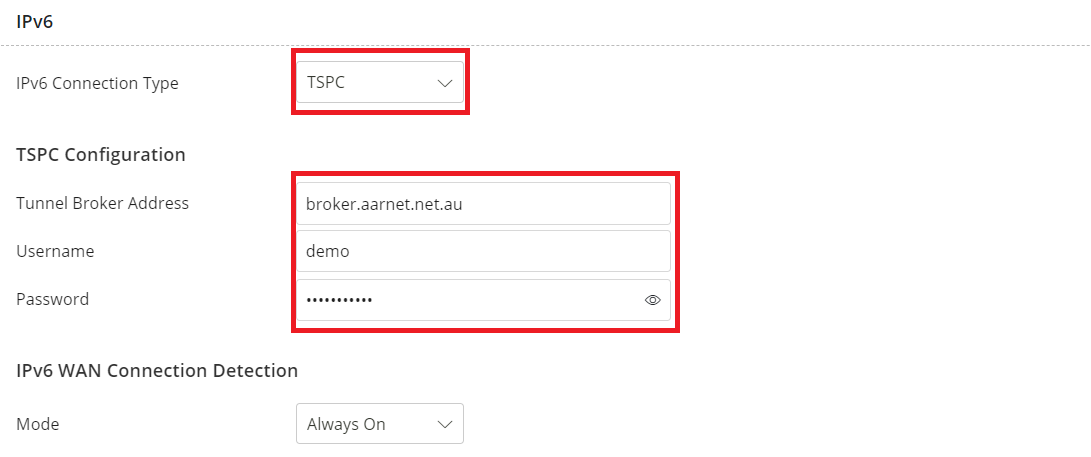
Static IPv6
If your ISP provides a static IPv6 address, you may configure that IPv6 address for WAN by entering the IPv6 address, Prefix Length and Gateway Address as the ISP provided.

6in4 Static Tunnel
In this mode, the IPv6 connectivity is provided by a tunnel broker on the IPv4 Internet through a tunnel configured manually. To use the 6in4 Static Tunnel, you must sign up for a tunnel broker service. Then, identify the tunnel server's IPv4 address in the Remote Endpoint IPv4 Address, enter the router's IPv6 address in 6in4 IPv6 Address, and enter the routed IPv6 prefix in LAN Routed Prefix.
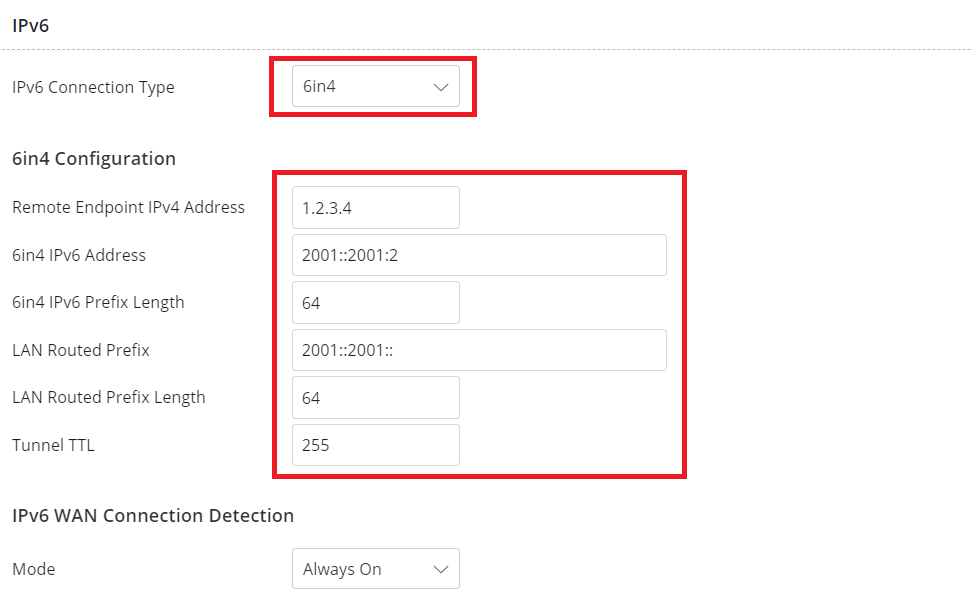
6rd
6rd uses 6in4 to provide IPv6 connectivity, which means IPv6 traffic is encapsulated inside IPv4. But ISPs have their 6rd prefix to control the transition of their access-aggregation IPv4-only part of their networks to native IPv6. To use 6rd, select Auto 6rd or Static 6rd as your ISP requires, enter ISP border relay agent IP in IPv4 Border Relay, enter IPv4 Mask Length and IPv6 Prefix as your ISP requires.
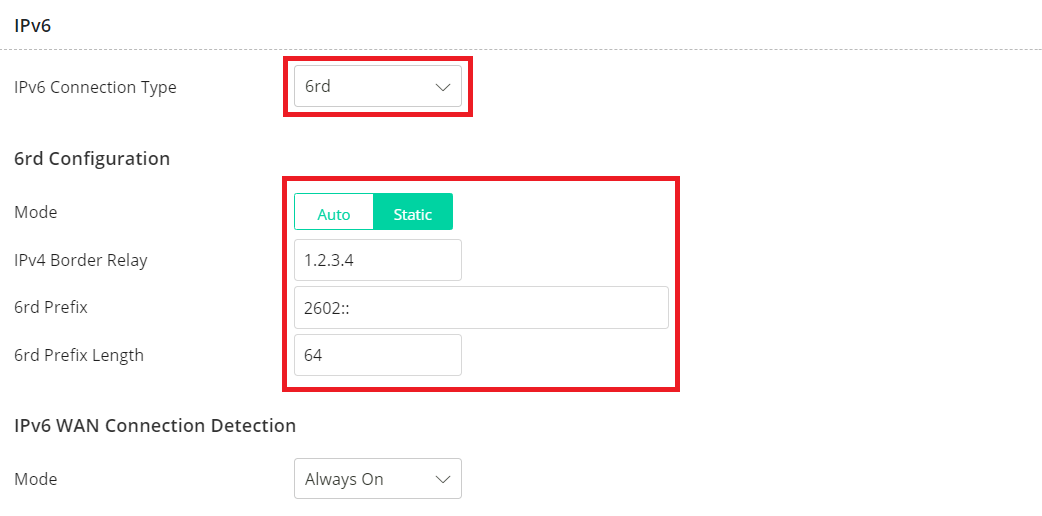
After IPv6 connection setup is finished, we can check IPv6 connection status on the Dashboard.

Furthermore, we may test the connectivity of IPv6 from the router by pinging an IPv6 global address in Utility / Network Tools / Ping

